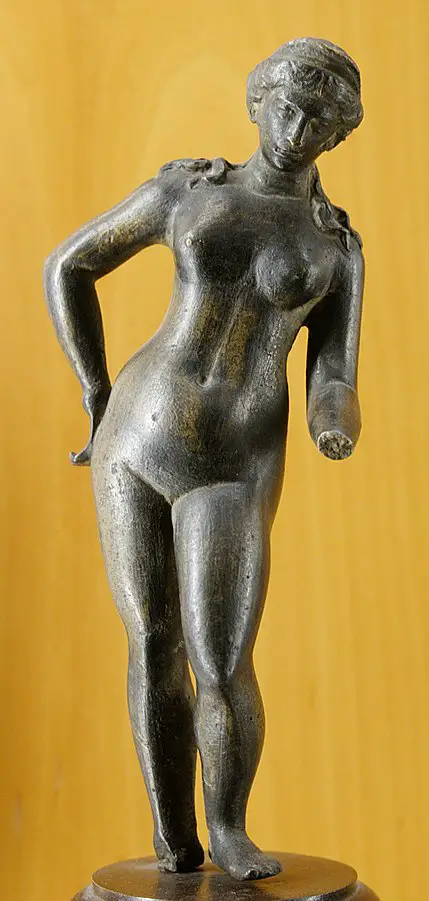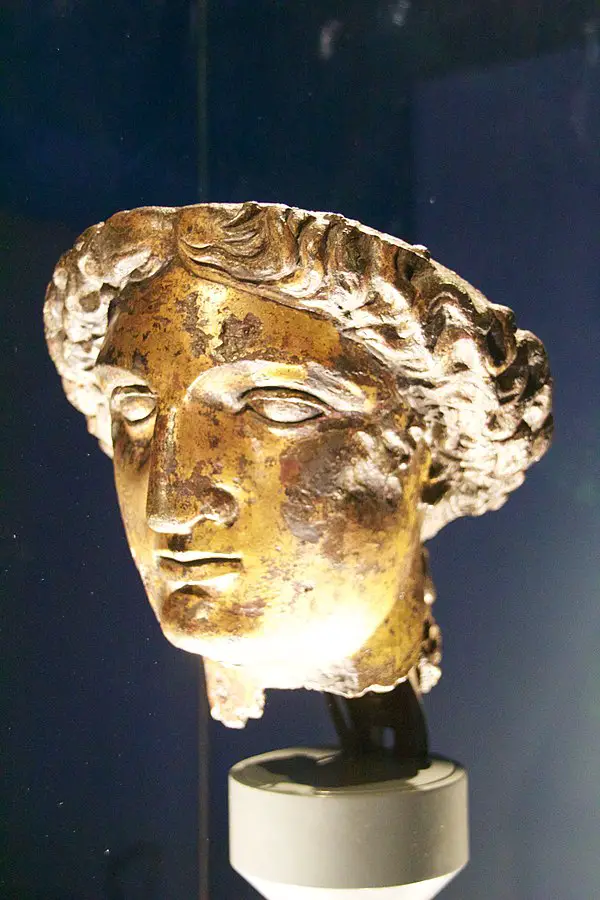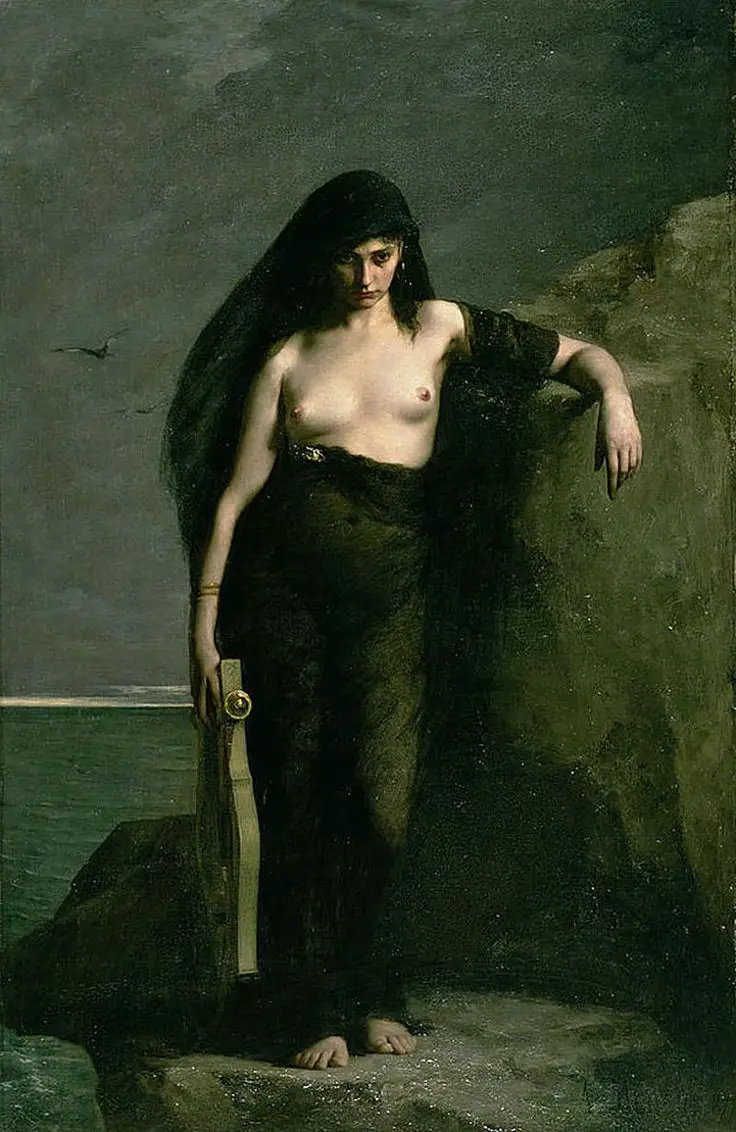Brief retrospective on the Sacred Feminine in the ancient Mediterranean, between numinous archetypes and the social context.
di Ascanio Modena Altieri
originally published on The Dissident Intellectual
image: Diana Efesina
From them everything comes, in them everyone finds himself and immerses himself, they who are the dispensers of life. The woman, both in the mythical - religious and spiritual - and historical fields, it has always attracted the interest and curiosity of every study community, above all for the social and symbolic role within the temporal fences in which they lived. Mythology and history, especially in ancient contexts, have often intertwined, becoming sensibly similar and useful to legitimize and strengthen a strong bond between the earthly mortal and the divine immortal. Both in the east and in the west, the figure of the Great Mother has crucially marked the metaphysical and spiritual development of mankind, bringing women to the center of a cultic world that is essential for collective survival: fertility.
Dee ...
The Goddess, beyond any specific religion, already becomes representative of the chthonic reality, telluric, the base from which all existence arises, both human and, opportunely, divine. In the Sumerian tradition, the goddess Tiamat, lady of all universes and closely linked to marine and abyssal environments, found herself in conflict with her turbulent son Marduk, she will be killed by him along with her monstrous hosts, however her limbs will later be used for the creation of the earth globe. The astrologer and historian of the Alexandrian and Seleucid era Berossus of Babylon, unites Tiāmat to Thalatte - from Thalassa, Θάλασσα in Greek - believed to be a primeval divinity, personification of the Mediterranean Sea, sister of Gaia, the Earth and Uranus, the Sky.

From this cosmic divine structure - shared by and between the traditional Indo-Aryan and European world - we can weave the long peplum of the dense and intricate Sumerian genealogies of Eridu and Nippur, up to the rich Vedic and pre-Olympic groups, where the figure of the woman in quality as a goddess she has a fundamental role, albeit by now placed in an increasingly patriarchal framework, we are in fact already far from the Neolithic venus with marked attributes. Aphrodite / Venus it is born from Talassa itself, fertilized by the testicles of Uranus, in turn castrated by Cronus / Saturn. Hephaestus / Vulcan, who fell in love with Athena / Minerva, ejaculated - according to tradition - either on the ground or on the leg of Pallas; in both versions, the sperm - cleaned by the Goddess with a piece of wool - was in any case thrown to the ground.
Here we return again to the core of the narrative: the soil was fertilized, Gaia herself was impregnated and gave birth to Erichthonius, son of the Virgin, one of the mythical kings of Athens, connected by nature anguiform - according to the traditions she had two snakes instead of legs, for others it was a crested and bearded snake - al mythical Cecrops, first king of Athens, whose daughters will be the very first nurses. Right on the figure of Athena we find one of the very few cases of female divinity devoid of a prominent feminine nature: she was born from the head of Zeus / Jupiter, who, having swallowed Meti, goddess of wisdom, had become the only "parent" of the Virgin. I put, in the act of building his daughter's dress and helmet inside the head of the king of the gods, he caused the excruciating migraine; rushed Hephaestus, with a double ax, he opened the skull of the thunderer and from this came out fully armed the Glaucopite Atritonia.

A strong masculine nature, combined with flourishing feminine attributes, was well embodied in the figure of theAmazon, in turn linked to a chaotic context and detached from the civil sphere. There are also the three gorgons, with the mortal Medusa among the best known, not to mention the temptresses siren Homeric - today comparable to harpies - and the ancestral sphinx, a pre-Olympic creature shared by the entire eastern Mediterranean basin. Undoubtedly, without taking into consideration the two goddesses of the Capitoline triad Minerva - incarnation of the warrior woman goddess with masculine tastes - and Juno - mother and woman par excellence, as queen of the gods and protector of marriages and parties - a mother divinity who managed to syncretize herself with the oriental worlds was Demeter / Ceres, who together with her daughter, Persephone Kore, served as a central figure within the Eleusinian mystery rites.
… And women
Regarding the Greek cult, the female deity played a vital role, however in the social context it was, if not almost enslaved, extremely relegated: the gynoeciums, apart from rare religious and public exceptions, were the place where women spent most of her time. It stands out among all by way of exception Sappho of Lesbos, the poet who lived between the seventh and sixth centuries aev who became an example of cultural and sexual emancipation for posterity; this last factor was then considered decisive for the formation of young girls before marriage, on the other hand, the homoerotic relationship was a practice in the Greek world first and then Hellenistic.
If Rome can represent the equivalent more to rose water than the Greek world - from Divus Augustus onwards women will be holders de facto of great political influence - the worlds in which women enjoyed complete emancipation were the Sumerian-Assyrian-Babylonian, Egyptian and Etruscan ones. If Athens had Aspasia of Miletus, companion of Pericles and Rome had from Lucretia, Cornelia, up to the august consorts with in the head Livia Drusilla, in the lands of the East there were women qualified to leave wills - something unthinkable in our area - and legitimized to the temporal and spiritual kingdom, as were the pharaohs Nefertiti of the XVIII dynasty e Cleopatra VII of the Ptolemaic dynasty.

The emblematic European case is that of Etruscan societyHere, in fact, the woman enjoyed the same privileges as the man and was held in the highest esteem, a fact that could corroborate the thesis of the Anatolian provenance of the Tursha. Perhaps it is precisely in oriental mystery circles, as in cult of Attis e Cybele - another great mother - of Tammuz and Ishtar, or in the even more well-known Isiac vein, which we find the explanatory pick of the religious and even partly historical role of women. Nothing can better summarize the consideration that the ancient could have of a woman, in the sacred and in the profane, as presented to us in a hymn to Isis, mother of Horus and wife of the revived lord of the afterlife Osiris, found among the various scrolls of Nag Hammadi, dating back to the XNUMXrd and XNUMXth centuries:
Because I am the first and the last
I am the venerated and despised,
I am the prostitute and the saint,
I am the bride and the virgin,
I am the mother and the daughter,
I am my mother's arms,
I am the barren one, yet my children are numerous,
I am the married woman and the single woman,
I am she who gives birth and she who never gave birth,
I am the consolation of the pains of childbirth.
I am the bride and groom,
And it was my man who fed my fertility,
I am my father's mother,
I am my husband's sister,
And he is my rejected son.
Always respect me,
Because I am the Scandalous and the Magnificent.
Recommended bibliography:
- M. Bachiega, God the Father or Mother Goddess?
- JJ Bachofen, Mothers and Olympic virility (edited by J. Evola)
- M. Bulteau, The daughters of the waters
- Campbell, Eisler, Gimbutas, Musés, The names of the Goddess
- M. Eliade, History of religious beliefs and ideas
- J. Evola, Metaphysics of sex
- L. Faranda, Absent souls. On the female body in the ancient Mediterranean
- J. Frazer, Matriarchy and Mother Goddesses
- R. Graves, The White Goddess
- K. Kerényi, Daughters of the Sun

Very interesting read to delve into. Thank you 💚